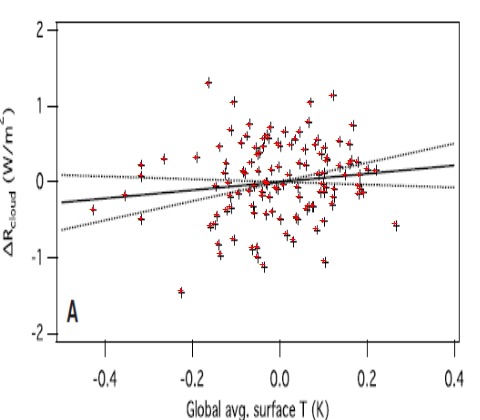We all know why Newsweek and many others (like Kevin Drum) choose to use the term "denier" for those of us who are skeptical of catastrophic anthropogenic global warming: These media folks, who are hesitant to use the word "terrorist" because of its emotional content, want to imply that we skeptics are somehow similar to Holocaust deniers.
But beyond just the issues of false emotional content, the word denier is incorrect as applied to most skeptics, including myself, and helps man-made warming hawks avoid a difficult argument. I try to be careful to say that I am a skeptic of "catastrophic man-made (or anthropogenic) global warming theory."
- So, does that mean I think the world is not warming? In fact, the evidence is pretty clear that it is warming (though perhaps not by as much as shown in current surface temperature databases).
- So does this mean that I think that human activities are not causing some warming? In fact, I do think man-made CO2 is causing some, but not all the current 20th century warming trend. I also think that man's land use (urbanization, irrigated agriculture, etc) has effects on climate.
Where I really get skeptical is the next proposition -- that man's burning of fossil fuels is going to cause warming in the next century that will carry catastrophic impacts, and that these negative effects will justify massive current spending and government interventions (that will have their own negative consequences in terms of lost economic growth, increased poverty, and reduction in freedoms).
Strong supporters of catastrophic man-made global warming theory do not usually want to argue this last point. It is much easier to argue points 1 and 2, because the science is pretty good that the earth has warmed (though the magnitude is in question) and that CO2 greenhouse effect does cause warming (though the magnitude is in question). That is why skeptics are called deniers. It is in effect a straw man that allows greenhouse supporters to stay on 1 and 2 without getting into the real meat of the question.
Here is a quick example to prove my point. Follow me for three paragraphs, then ask yourself if you have ever heard any of this in the media or on any RealClimate-type site's FAQ.
Anthropogenic global warming hawks admit that the warming solely from the CO2 greenhouse effect will likely NOT rise to catastrophic levels. So how do they get such big, scary forecasts? The answer is positive feedback.
Almost every process you can think of in nature operates by negative
feedback, meaning that an input to a system is damped. Roll a ball, and eventually friction and wind resistance
bring
it to a stop. Positive feedback means that an input to the system is multiplied and increased. Negative feedback is a ball in the bottom of a bowl, always returning to the center; positive feedback is a ball perched precariously at the top of a
mountain that will run faster and faster downhill with a tiny push. Positive feedback
breeds instability, and processes that operate by positive feedback are
dangerous, and usually end up in extreme states -- these processes tend
to
"run away" like the ball rolling down the hill. Nuclear fission, for
example, is a positive feedback process.
Current catastrophic man-made global warming theory asserts that our climate is dominated
by positive feedback. The last UN IPCC report posits that a small increase in
temperature from CO2 is multiplied 2,3,4 times or more by positive
feedbacks like humidity and ice albedo. So a modest degree or degree and a half of warming from the greenhouse effect becomes a scary five or eight degrees of warming in the next century once any number of hypothesized positive feedbacks are applied. Add to this exaggerated, sometimes over-the-top visions of possible negative consequences, and that is how global warming hawks justify massive government action.
OK, that is a very brief description of what I consider a sophisticated reason to be skeptical: Most catastrophic warming forecasts depend on positive feedback loops, feedbacks for which we have little or no evidence and which don't tend to dominate in other stable systems. So how many times have you seen this issue discussed? Zero? Yeah, its so much easier just to call us deniers.
If you are interested, here is slightly longer version of my skeptic's point of view. Here is my much longer version. Here is the specific chapter that discusses feedback loops. Here is Roy Spencer discussing problems with studies trying to measure these feedbacks.
Postscript: By the way, it is in this context that the discussions about restating temperatures and problems with historical surface temperature measurements are important. Exaggerated historical warming numbers leave more room to posit positive feedback loops. Lower historical numbers, or evidence past warming is driven by non-man-made sources (e.g. solar activity), leave less room to justify positive feedback loops.
Update: RealClimate has posted their six steps to explain catastrophic warming from CO2. Seems have buried the feedback issue. Note that forcings mentioned here include feedbacks, they are not from CO2 alone but from CO2 + positive feedback. Strange they didn't mention this.








